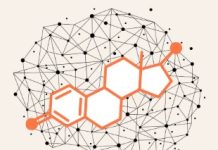Alberto Mantovani discusses endocrine disruptoring chemicals, and the network of knowledge provided through the activity of the European Teratology Society
The European Teratology Society (ETS, www.etsoc.com) is the only European scientific society specifically devoted to research on risk factors for human development. Endocrine disrupting chemicals (EDC) are currently the “hottest” topic in toxicological rik assessment, and the intrauterine and post-natal development are specifically vulnerable to EDC modes of action: thus, EDC-related topics have featured prominently in ETS conferences, including the most recent ones (Budapest, 2017; Berlin, 2018). The ETS has identified and tackled EDC issues by making avail of its multi-voice network of knowledge, involving scientists from academy, industry and public institutions. EDC are substances that induce adverse effects through endocrine mechanisms; this seems rather straightforward, if one does not take into account the inherent complexity of the endocrine system:
– how the new strategies for toxicological risk assessment can help in regard of EDC? The use of Adverse Outcome Pathways (AOP) will elucidate the plausible link between molecular events (e.g., receptor binding) or biomarkers (e.g., changes in hormone levels) and adverse effects. Beyond individual AOP, the input of chemically-specific pharmacokinetics and the interlinking of different AOPs in ontologies lead to Integrated Approaches to Testing and Asessment (IATA). In perspective, IATA may exploit the big and increasing amount of data in toxicology, in order to predict potential adverse effects, including endocrine disruption, of chemicals in a more robust and time-effective way;
– in the meamwhile, in the current scenario best practices should be implemented in order to achieve a robust identification of chemicals of concern, such as better exploitation of data bases and pharmacokinetics and mechanistic information in order to assess the human relevance of animal data;
– cancer and EDC, a still controversial question. Differently from the “classical” genotoxic (i.e., DNA-damaging) carcinogens, such as acrylamide or aflatoxin B1, several EDC can act as tumour promoters through epigenetic and/or proliferative mechanisms, especially in tissues with a strong and direct hormone regulation (breast, prostate, testis, thyroid). The intrauterine phase may be a critically vulnerable window: the evaluation of potential EDC transplacental carcinogenesis calls for an interdisciplinary approach. Improved testing of chemicals, and especially the development of predictive biomarkers to be used in mother-child cohorts would estimate and reduce ongoing and future risks;
– the evaluation of thyroid effects may be the current priority EDC topic, in the fields of both chemical safety and public health: indeed, many chemicals, in particular pesticides, can target several steps of thyroid function, including pituitary regulation, hormone synthesis, hormone catabolism , Thyroid-targeting EDC primarily affect neurodevelopment: ad-hoc toxicological investigations may model dose-response and lifestage-response relationships, in order to identify brain “phenotypes” and functional impairments related to the subtle, yet adverse, effects of low-intensity thyroid disruption. Moreover, hormone level changes should be evaluated as a pattern, which is much more predictive that single biomarkers (e.g., T4 level in serum/plasma). Last but not least, batteries of non-animal tests are needed in order to reliably screen thyroid-targeting EDC; moreover, intact non-mammalian organisms, like the zebrafish embryo, may deserve attention as they can offer a number of molecular, biochemical, morphological and even behavioural endpoints.
Overall the ongoing ETS debate on EDC illustrates the added value provided by an interdisciplinary network of knowledge in tackling ongoing and emerging issues.
The programmes, abstracts and full-lenght papers of ETS conferences are published in a dedicated yearly issue of the journal Reproductive Toxicology.








